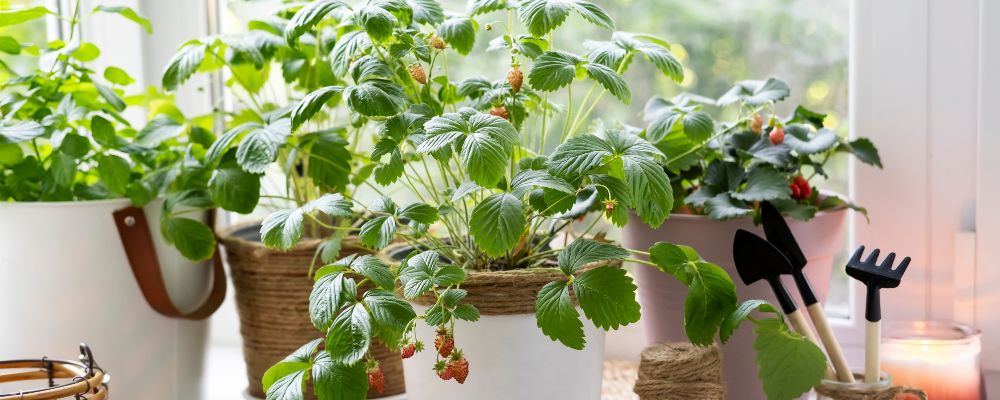Introduction to Container & Small-Space Gardening
Living in an urban environment or having a limited outdoor area shouldn’t stop you from enjoying the benefits of Container Gardening for Small Spaces. Container and small-space gardening offers a practical and creative solution for bringing greenery into your life, regardless of space constraints. Whether you have a balcony, patio, or just a windowsill, this guide will show you how to grow plants in compact spaces.
We’ll cover everything from choosing the right containers to selecting the best plants for small areas. With careful planning, you can grow vegetables, herbs, flowers, and even small fruit trees in containers.
Table of Contents
- Why Choose Container & Small-Space Gardening
- Planning Your Small Garden
- Selecting the Best Containers
- Soil and Drainage Tips
- The Best Plants for Container Gardening
- Arranging and Maximizing Your Space
- Seasonal Care and Maintenance
- Common Problems and How to Solve Them
- Creating a Vertical Garden
- DIY Projects for Small-Space Gardens
1. Why Choose Container & Small-Space Gardening
Container gardening is perfect for those with limited space. Here’s why it’s so popular:
- Flexibility – Easily rearrange plants and experiment with different layouts.
- Mobility – Move containers indoors during harsh weather.
- Low Maintenance – Easier to control pests and soil quality.
- Creative Expression – Use various container styles to match your aesthetic.
2. Planning Your Small Garden
Before diving into container gardening, plan your garden layout. Consider how much sunlight your space gets, the types of plants you want to grow, and the available area.
- Evaluate Sunlight: Determine which areas get full sun, partial sun, or shade.
- Define Your Goals: Are you growing for beauty, food, or both?
- Sketch a Layout: Make a simple plan for placing containers and trellises.
3. Selecting the Best Containers
Choosing the right containers is crucial. Here’s what you need to know:
- Material Matters: Terracotta pots are breathable but dry out quickly, while plastic retains moisture.
- Size and Depth: Ensure your container is large enough for the plant’s root system.
- Drainage: Always use containers with drainage holes.
4. Soil and Drainage Tips
Healthy plants start with the right soil. Regular garden soil isn’t ideal for containers because it compacts easily. Use a high-quality potting mix designed for container gardening.
- Add Perlite or Vermiculite to improve aeration and drainage.
- Compost: Mix in compost for added nutrients.
- Watering Tips: Check soil moisture daily, as containers dry out faster than garden beds.
5. The Best Plants for Container Gardening
Certain plants thrive in small spaces. Here are some top choices:
Vegetables
- Tomatoes
- Peppers
- Lettuce
- Spinach
- Radishes
Herbs
- Basil
- Mint
- Thyme
- Rosemary
- Parsley
Flowers
- Petunias
- Marigolds
- Geraniums
- Begonias
6. Arranging and Maximizing Your Space
Make the most of your small garden with these tips:
- Use Vertical Space: Install shelves or hang planters.
- Group Containers: Create a focal point by clustering pots of different sizes.
- Incorporate Furniture: Use benches or tables with built-in planters.
7. Seasonal Care and Maintenance
Caring for a container garden requires adjusting your routine with the seasons.
- Spring: Plant seedlings and fertilize.
- Summer: Water daily and monitor for pests.
- Fall: Harvest late-season crops and prepare plants for winter.
- Winter: Protect perennials and bring sensitive plants indoors.
8. Common Problems and How to Solve Them
Container gardening comes with unique challenges. Here are some common issues and how to fix them:
- Overwatering: Ensure proper drainage and avoid watering too frequently.
- Pests: Use organic sprays or introduce beneficial insects like ladybugs.
- Nutrient Deficiency: Fertilize regularly with a balanced fertilizer.
9. Creating a Vertical Garden
Vertical gardens are a game-changer for small spaces. Use trellises, wall-mounted planters, and hanging baskets to grow upward instead of outward.
DIY Vertical Garden Ideas:
- Pallet Gardens
- Shoe Organizer Planters
- Hanging Mason Jars
10. DIY Projects for Small-Space Gardens
Want to add a personal touch to your garden? Try these DIY projects:
- Decorative Planters: Paint old pots to match your style.
- Upcycled Garden Furniture: Turn old chairs into plant stands.
- Compost Bin: Create a small compost bin for kitchen scraps.
Conclusion
Container and small-space gardening is a rewarding way to enjoy the beauty of nature, even in the smallest areas. With the right containers, plants, and a little creativity, you can transform your space into a lush, productive oasis.
Start small, experiment, and watch your garden flourish!

